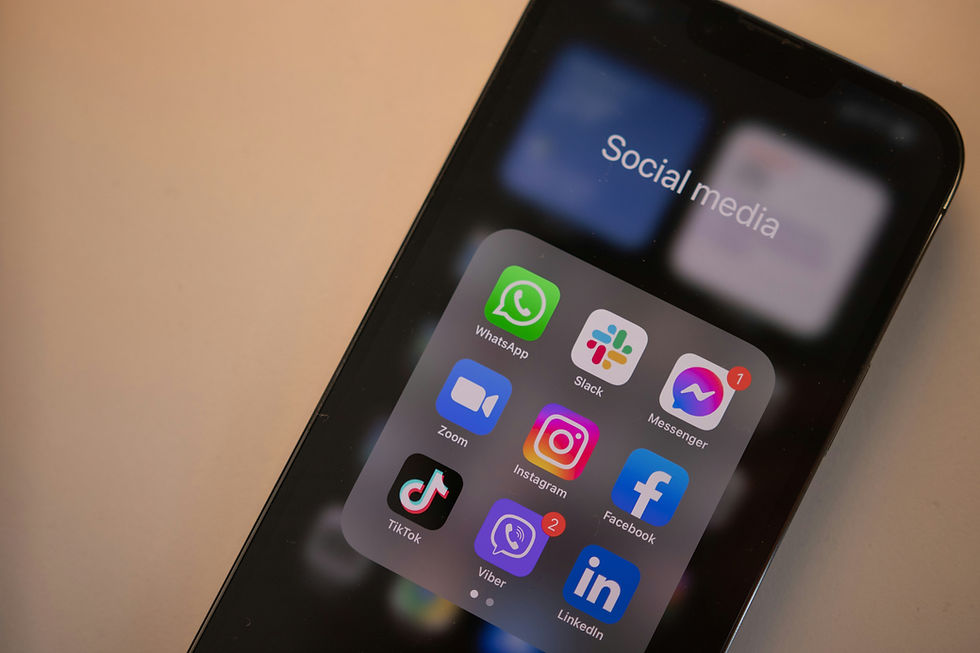The Lead Generation Funnel: A Simple Guide to Elevate Your Sales
- GROW Marketing Agency

- 5 days ago
- 3 min read
You've probably heard the terms marketing funnel and sales funnel used interchangeably. They're related, but for a business focused on growth, it's more helpful to think of it as a single lead generation funnel. This is the path a potential customer takes, from discovering your business for the first time to becoming a paying client.
This guide will break down the essential marketing funnel stages and show you how to build a lead generation funnel that works for you.

Understanding the Lead Generation Funnel
At its core, the lead generation funnel is a visual representation of your customer journey. It's wide at the top, representing a large number of people, and narrows at the bottom as you filter and qualify them into paying customers.
1. Top of the Funnel (Awareness)
This is the largest stage, where you’re trying to attract as many people as possible. At this point, they're not ready to buy. They may not even know they have a problem that you can solve. Your goal is simply to make them aware of your brand and establish yourself as an authority.
What to do: Create valuable, educational content that answers common questions your target audience has.
Examples: Blog posts, social media content, videos, podcasts, and infographics.
2. Middle of the Funnel (Consideration)
Once someone is aware of your brand, they move into the middle of the funnel. Now they're considering different solutions to their problem, and they're comparing you to your competitors. Your goal is to build trust and demonstrate why you are the best choice.
What to do: Create content that provides more specific information and helps them evaluate their options.
Examples: Case studies, white papers, webinars, product comparison guides, and email newsletters.
3. Bottom of the Funnel (Decision/Conversion)
This is the most critical stage. The leads here are highly qualified and ready to make a purchase decision. They just need a final push or a simple reason to choose you.
What to do: Offer incentives and direct calls-to-action that encourage them to buy.
Examples: Free consultations, product demos, limited-time offers, and customer testimonials.
How to Build a Lead Generation Funnel
Now that you know the stages, here are the steps to create a funnel for your business.
Define Your Target Audience: You can't attract the right people if you don't know who they are. Create a buyer persona to understand their pain points, goals, and where they spend their time online.
Create Your Content: Develop content for each stage of the funnel. For example, a blog post about a common industry problem (Top of Funnel), a case study showing how you solved it for a client (Middle of Funnel), and a free consultation offer on a landing page (Bottom of Funnel).
Choose Your Channels: Figure out where your audience is and how you'll reach them. This could be through a blog, social media, paid ads, or email marketing.
Track and Measure: Use analytics to see where people are entering your funnel and where they are dropping off. This data will help you optimize your funnel and improve your results.
By systematically guiding your prospects through each stage of their customer journey, you can turn a random visitor into a loyal, paying customer. It's a fundamental part of a successful sales funnel and a key to sustainable business growth.
Guiding Your Leads to Success Through Your Services
Now that the lead funnel is in place, you can take steps to start attracting a wider audience and retain them, even convert them into customers, through additional steps. Identify the audience, then entice them through blogs, social media engagement, paid ads, and SEO-enhanced pages to start moving them through your funnel as an MQL. Once you’ve got them hooked and they decide to go for a sale, they can become SQLs and you can start moving towards a sale. Eventually you’ll have a dedicated customer base that is constantly growing alongside your business that keeps coming back for more.




Comments